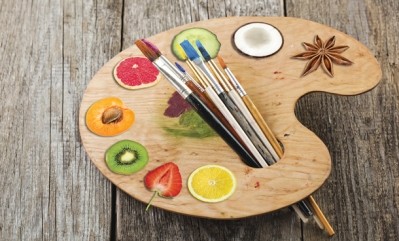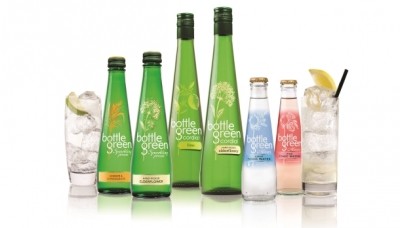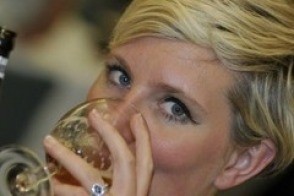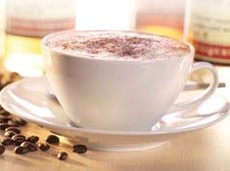Trends
Are soft drinks next to get the 'craft' treatment?
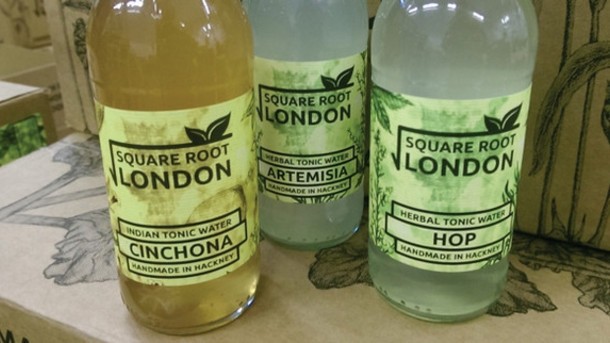
Nigel Paine, Britvic’s commercial director for out-of-home, says he sees a distinct trend developing in craft soft drinks with branded glassware, provenance and a perfect serve. “There have been a few that have caught my eye and we’ll be looking to bring in even better versions,” he says.
It’s all part of the trend around premiumisation, which has swept through everything from beer to Bourbon.
In soft drinks, quirky and niche brands like Fentimans have been around for donkey’s years — and it seems like the rest of the category is now starting to catch up.
But the job’s not done yet, says Dave Ward, Fentimans’ national on-trade controller. “Consumers are more demanding and are looking for choice and quality in all drinks categories, but the typical soft drinks range does not reflect this,” he argues.
“A beer drinker has myriad choices through craft beer and cask ales, a gin drinker can probably choose from a range of three or more gins, but when it comes to soft drinks a typical range consists of cola, lemonade, fruit juice and J20.
“Britvic adding J20 Spritz highlights the premiumisation that is occurring in the market. Outlets are demanding better quality products.”
Paine says allowing customers to have their own spin on a brand is one avenue to be explored more. This might mean a special dispenser, such as one for Pepsi Max, which allows customers to add flavours, or a really good perfect serve.
“Soft drinks work in the leisure world if you can make something that isn’t available in every single shop in the land,” says Paine.
Adding ingredients
Caroline Cater, operational marketing director at Coca-Cola Enterprises, agrees: “In Europe, many consumers are personalising Coca-Cola by adding other ingredients, such as fresh mint, ginger slices or elderflower, to create a new drink,” she says.
“This may be something that bar staff could experiment with to add some theatre.”
But’s it’s not all DIY, with packaged brands that have quality, flavour and a good look all helping to take the category forward. Adult and premium soft drinks increased volumes by 6.4% and value by 10% in the year to 21 February (CGA).
Customers are also getting fussy about their mixers. The popularity of many spirit categories saw total tonics increase 14% in value, but premium products rose 137% during the same period.
“If a customer is prepared to pay £3 more for a premium spirit because of the ingredients it contains then why wouldn’t they use the same logic when choosing which mixer to put with the spirit?” asks Ward at Fentimans.
Indulgence and health
Amanda Grabham, marketing director for Shloer and Bottlegreen at supplier SHS, has also observed the premium trend and says it’s driven by a combination of indulgence and health awareness.
“Consumers are increasingly seeing a premium soft drinks as an alternative to alcohol,” she says.
“They are looking to treat themselves when they’re eating out but they’re also making sure that they stay relatively healthy.”
Bottlegreen is trying to educate both consumers and the trade about what makes its soft drinks different. “We use a wine-style production process, which produces a clean product that goes well with food,” she says.
“We’ve put a big focus on brand training and have brought several on-trade teams down to the mill to get a feel for how the product is made.”
But Steve Carter, sales and marketing director at juice supplier Frobishers, thinks that the treat element outweighs health decisions for many customers.
“Focus groups run by Frobishers have demonstrated that when socialising, the aspect of healthy choices is very much secondary or tertiary, and the number one purpose remains enjoyment,” he says. “This is completely different when shopping for home consumption, when consumers are more interested in studying ingredients and nutritional values.”
Graham Carr-Smith, founder of the Qcumber soft drink brand, adds: “Consumers are certainly looking ever-closer at the ingredients and calorie content of their food and drink. “But there’s inevitably a trade-off between taste and health considerations and taste usually wins, particularly with the more adult-focused soft drinks in the on-trade, as these are often consumed as a treat.”
Sight of opportunity
Food-led outlets accounted for more than half of the total on-trade soft drinks sales of £4.2bn last year, an increase of 5% on 2013. Freehold food-led pubs were up 20.2% to £98m. But wet-led pubs shouldn’t lose sight of the opportunity, says Alan Hay, on-trade controller at Irn-Bru, Strath- more and Snapple supplier AG Barr.
“One size doesn’t fit all,” he says. “The key is for operators to understand their customer base and to tailor their soft drinks offer accordingly.
“For many outlets, offering flavoured carbonates and juices is enough, but for others these can be used as the main ingredients in mocktails, creating a bit of theatre in the process.”
Lawrence Moore, sales director at Belvoir Fruit Farms, urges pubs to be bold with their ranges.
“The ones who will maximise profits are the ones who are open to experimentation and trying different things,” Moore says.
“The bigger companies like CCE and Britvic are innovating as well as the smaller ones, but the biggest challenge is sometimes persuading licensees to focus on the opportunity these brands give to draw attention to the category.”
Growth segments
Flavoured carbonates (+2.8%) and pure juice (+7.3%) were among the growth segments in on-trade soft drinks last year. So too were squash (+4.3%) and bottled water (+26.8%), despite the free availability of tap.
Paine at Ballygowan supplier Britvic, says: “Water’s the ultimate healthy drink, but people also want to have an experience and, if you’re eating out, a bottle of water rather than tap feels more special.”
He adds: “Squash is playing a big part in food-led pubs, particularly ones catering for families, where we have Robinson’s milk bottles with a patterned curly straw, which bring it to life for kids.”
In carbonates, cola and lemonade still command by far the biggest volumes of any soft drinks. CCE has launched its lower-calorie Coke Life into the on-trade, along with the Schweppes Sparkling Juice range, which comprises Grapefruit & Blood Orange, Orange & Cranberry and Lemon & Elderflower flavours.
It has an online perfect serve training programme to encourage licensees to make the most of such products on-site. “The first part of this training programme deals with how bar staff can enhance the presentation of soft drinks,” says Cater, “while the next module will look at the second serve opportunity, giving pub and bar staff the tools to encourage consumers to order more than one drink.”
Qcumber’s Carr-Smith says product information and service should involve a dialogue between staff and customers.
“Customers don’t want to be bamboozled by a range of 30 new-flavoured products and the detailed history of each, but they would be keen to know about one or two new lines that are being stocked and be given, without asking, an introductory line on each,” he says.
“It’s the information age, not the crane-your-neck-and-see-if-you-can-read-the-bottom-shelf-label age.”
Forecasting a social event
It’s a no-brainer that when the sun comes out, pubs sell more soft drinks — but venues can do themselves a favour by keeping an eye on the forecast to make sure they don’t get caught out.
“It’s not solely the weather but the forecast that is important,” says Britvic’s Nigel Paine. “If the forecast is good, people start to make plans ahead — and they’re less likely to change when they’ve made a commitment to a social gathering, even if the forecast doesn’t turn out as expected.”
But if the outlook looks good, when do you up your orders, and by how much? Paine says Britvic analysis has shown there’s a small effect on soft drink sales at temperatures as low as 18˚C, but extra demand really starts to kick in when the mercury hits the mid-20s.
Steve Carter at Frobishers says: “We can experience sales uplifts of between 25% and 100% during warm, sunny periods. It’s difficult for licensees to balance enough stock holding with potential demand and cash flow.
“As a brand owner, we carry increased stock holdings to help fill the supply chain in spring and summer, and orders always jump significantly on a Monday morning following a hot weekend.”
Lawrence Moore at Belvoir Fruit Farms adds: “Bottled soft drinks have a really long shelf life. If the forecast is good it’s probably better to have the stock and not need it than not have it and lose sales.”
